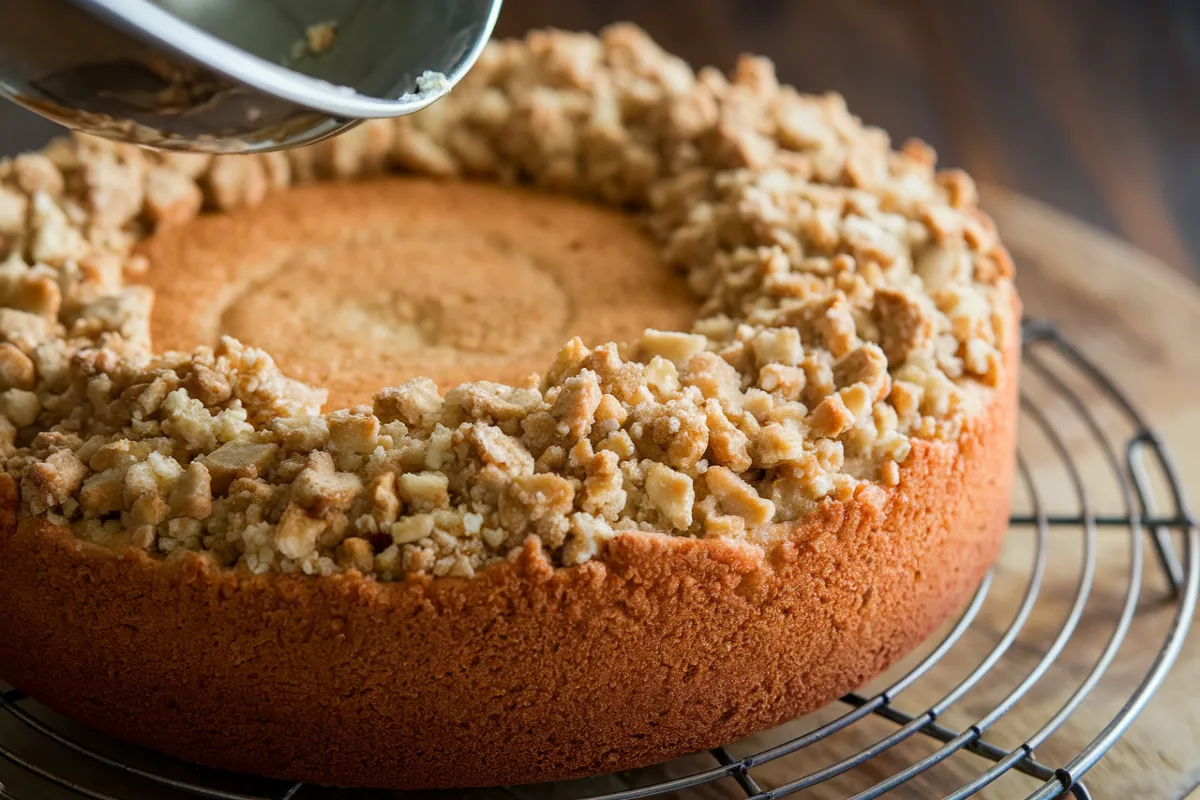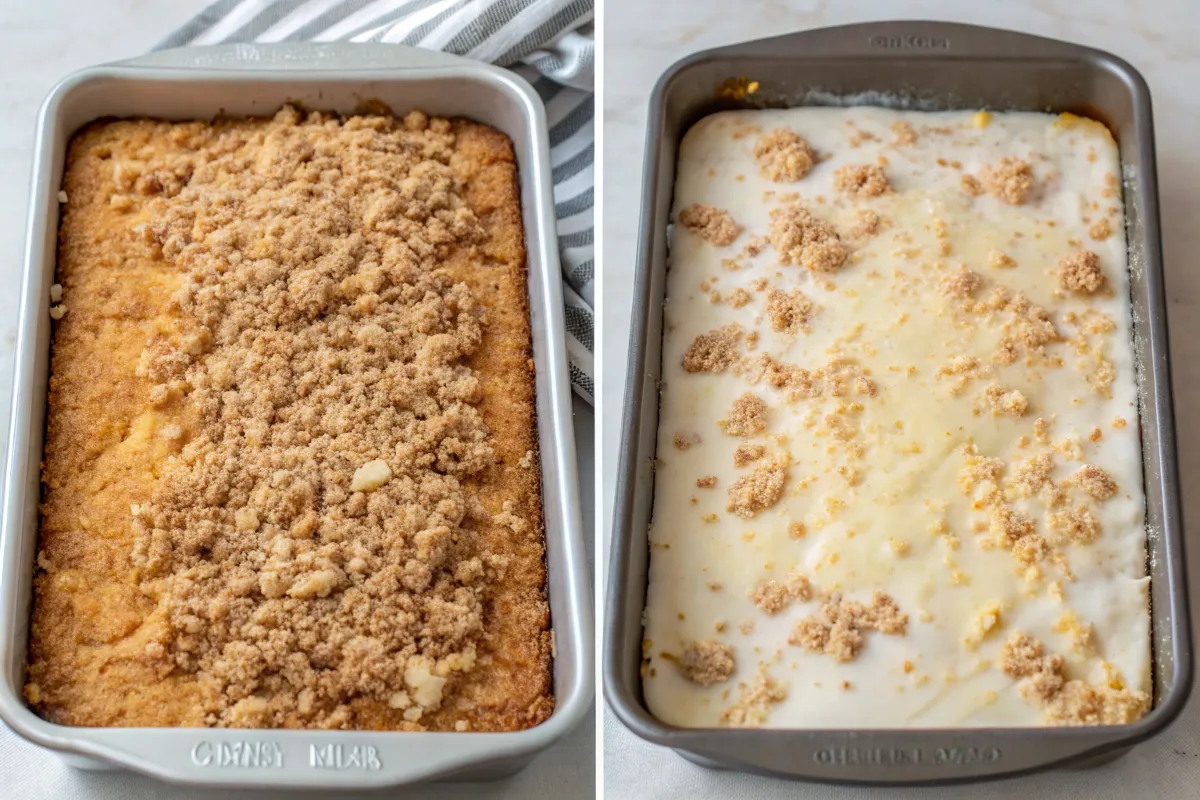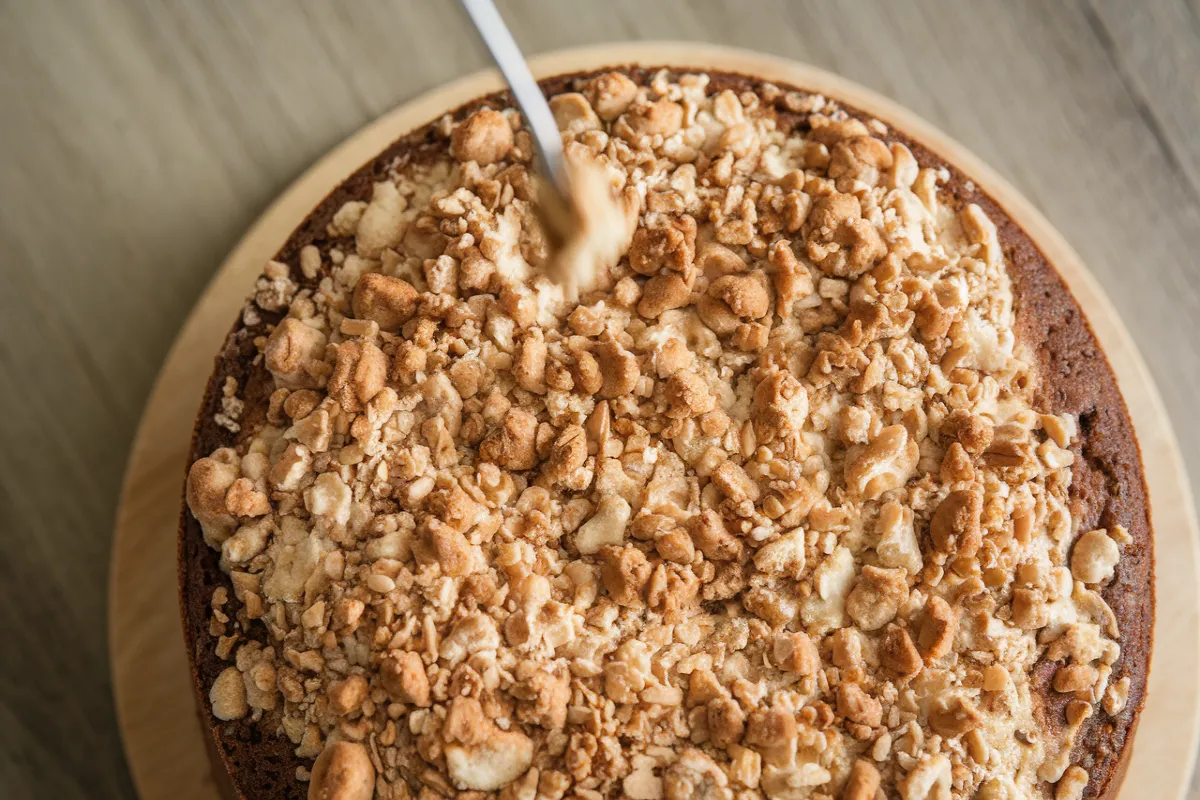This article explores whether streusel topping should be added before or after baking. We’ll cover best practices to achieve perfectly crispy results.
The Great Streusel Debate: Before or After Baking?
The question of when to add streusel topping—before or after baking—is a common one. It affects the texture and final look of your baked goods. Therefore, understanding the nuances is key for success. This article will guide you to the best approach.
Understanding Streusel: A Quick Overview
Streusel is a crumbly topping made from butter, flour, and sugar. Sometimes, it includes spices or nuts. Accordingly, it adds a delightful texture to many treats. For example, it’s often used on muffins, pies, and coffee cakes. Because the ingredients are simple, the method of application is important.
Should the streusel topping be added before baking? The Conventional Method
Generally, streusel topping is applied before baking. Specifically, this allows the topping to bake and become golden brown. Therefore, the sugars in the streusel caramelize, creating a crisp texture. This method is effective for most recipes. Furthermore, it’s the traditional approach used in many baking guides.
Benefits of Baking Streusel Topping Beforehand
Baking streusel topping from the start offers several benefits. First, the topping adheres well to the base. Also, it bakes evenly and becomes delightfully crunchy. Consequently, this creates a unified and satisfying dessert. Additionally, the flavor of the streusel melds perfectly with the baked treat. However, there are some downsides to consider.
Potential Drawbacks of Streusel Before Baking
Despite the advantages, baking streusel before can sometimes result in a topping that’s too hard or even slightly burnt. Especially when the base needs a longer baking time. Another possible problem is that the streusel may sink slightly. Hence, it can become less prominent if the batter rises significantly during baking. Indeed, you must monitor carefully.
When to Consider Adding Streusel After Baking
In some cases, adding streusel after baking is the better choice. This is especially true for recipes with delicate toppings. For instance, some bakers prefer this method for cakes that bake quickly. Therefore, the streusel retains its light and crumbly texture. Furthermore, this approach is ideal if you want a very soft topping.
How to Add Streusel Topping After Baking
Adding streusel after baking requires a different technique. First, fully bake your dessert. Then, carefully scatter the streusel over the hot surface. Afterward, lightly broil for a few moments. Nevertheless, you need to be watchful to prevent burning. This will melt the butter and slightly brown the topping. Subsequently, allow it to cool and set.
Streusel Topping and Moisture: A Crucial Consideration
Moisture is another key factor. If your batter is very moist, adding streusel before baking might lead to sogginess. Similarly, if the baked good will be stored for a while, it may soften the streusel topping. Therefore, timing and method matter significantly. In many cases, adding it before is the best option.
Preventing Soggy Streusel Topping: Tips and Tricks
To avoid a soggy streusel, there are some tricks. First, make sure your streusel is dry and crumbly before application. If you use butter, make sure it’s cold. Moreover, use a small amount of liquid in your base. Also, a quick bake is helpful. Additionally, be sure to cool the baked goods on a rack. Conversely, if you add the streusel after baking, apply it only when it’s fully baked and nearly cool.
The Importance of Temperature for Streusel Topping
The temperature of your oven is another crucial factor. A too-high temperature may burn the topping. Comparatively, a lower temperature may cause the streusel to melt before it browns. Therefore, always follow the recommended oven temperature. Additionally, monitor the bake closely.
Should the streusel topping be added before baking for Pies?
For pies, the timing is often crucial. Usually, streusel topping is added before baking. Specifically, this allows the topping to bake alongside the pie filling. Consequently, the flavors meld well, creating a harmonious taste. The pie will benefit from the even distribution of heat. Moreover, the topping will be nicely browned.
Streusel Topping on Muffins: Before Baking is Key
For muffins, the streusel almost always goes on before baking. Basically, this method ensures the topping becomes crispy and adheres well. Thus, it provides a textural contrast to the soft muffin. This is a very standard practice.
Coffee Cake and Streusel Topping: A Classic Combination
Coffee cakes and streusel are a perfect pairing. Generally, the streusel topping is applied before baking. Hence, it bakes into a golden crust. This results in a delightful textural difference. It will complement the fluffy cake below.
Different Streusel Topping Recipes: Do They Affect Timing?
The precise streusel recipe can influence when it’s best applied. For example, a very buttery topping might be better added before baking. A drier topping is better after. Another consideration is the sugar type. Brown sugar caramelizes differently than white sugar. Therefore, adjust baking times accordingly.
Testing Your Streusel Topping for Best Results
Experimentation is key to determining what works best. It’s important to test small batches. Specifically, try adding the streusel before baking in one batch. Then, try adding it after in another batch. Comparing the results will help you figure out your preference. Indeed, personal preference is a key factor.
Troubleshooting Common Streusel Issues
Even with care, streusel can sometimes pose problems. If it’s too dry, add a touch more melted butter or oil. Conversely, if it’s too wet, add some more flour or oats. Additionally, for uneven browning, ensure the pieces are roughly the same size. Furthermore, avoid over packing.
Streusel Topping and Its Place in Culinary History
Streusel has a rich history in baking. Originally from German cuisine, the term means “something scattered”. Therefore, it describes the way the topping looks when applied. The technique has been adapted and enjoyed worldwide. Specifically, it provides added texture and sweetness.
The Art of the Perfect Streusel: Practice and Patience
Mastering streusel takes practice. Essentially, it’s about understanding how the ingredients interact. It also includes knowing how the oven affects the bake. Consequently, patience is essential. Chiefly, the goal is to achieve a balanced flavor and texture. Ultimately, this makes the effort worthwhile.
Should the streusel topping be added before or after baking? The Verdict
So, should the streusel topping be added before or after baking? In conclusion, the best time to add your streusel is before baking. However, for some specific recipes or to achieve a softer topping, adding it after baking is also an option. Nevertheless, understanding both methods empowers you. With careful attention to detail, you can ensure streusel success every time.
Specifically, Consider These Key Factors:
-
Moisture content of your batter
-
Oven temperature
-
Type of streusel topping
-
Desired texture
-
Baking time
Refining Your Baking Skills: Embracing the Streusel Challenge
Baking is a science and an art. Therefore, do not be afraid to try and test new things. Unquestionably, mastering streusel improves your culinary skills. Undoubtedly, the right technique can make all the difference. Finally, enjoy your baking journey.
The Science of Streusel: How Ingredients Interact
Understanding the science behind streusel helps to achieve the perfect texture and flavor. Specifically, the ratio of butter to flour is critical. Too much butter can result in a wet, soggy topping. Conversely, too much flour will make the topping dry. The type of sugar also influences the result. White sugar provides a crispness. Brown sugar will give a chewy texture and a deeper flavor. Thus, the interaction of these key ingredients greatly influences the outcome of the streusel.
Exploring Streusel Topping Variations: Beyond the Basics
While the classic streusel uses simple ingredients, there are many variations you can explore. For instance, adding oats provides a nuttier flavor and a slightly chewier texture. Another common addition is chopped nuts, such as pecans or walnuts. Moreover, adding spices like cinnamon, nutmeg, or cardamom can add a new dimension of flavor. Additionally, citrus zest, such as lemon or orange, also provides a unique flavor. Ultimately, these variations add interest to the basic streusel recipe.
Streusel Topping and Different Baking Applications
Streusel is incredibly versatile, so you can adapt it to different baked goods. For example, on fruit crisps, it complements the soft cooked fruit. It is also delicious on scones. Comparatively, using it on a cake adds an element of crunch. In addition, it enhances the flavor and appeal of the baked item. Indeed, the applications are endless.
Enhancing Flavor: Using Spices and Extracts in Streusel
To elevate your streusel, consider adding various flavor enhancers. A touch of vanilla extract, almond extract, or maple extract can make a difference. Similarly, spices such as ginger, cloves, and allspice can give a warm, inviting flavor. Specifically, these additions can be adjusted to suit your taste and complement the flavors of the underlying base. Therefore, don’t be afraid to be creative.
Storing Streusel Topping: Best Practices
Streusel is best used fresh, but can be made in advance. However, it needs to be stored properly. If you make the streusel ahead of time, it should be stored in an airtight container. Keeping it in the refrigerator will help to keep the butter from melting. You can also freeze streusel in an airtight container. Use within a couple of months for the best quality. Therefore, be sure to label it with the date it was made.
The Role of Fat in Streusel Topping: Butter vs. Oil
Butter is the classic choice for streusel. However, some recipes use oil. Butter provides a richer flavor and allows for a crisper texture. Conversely, oil makes the topping slightly softer. Additionally, some bakers use a combination of both. Hence, it is important to consider the fat you are using.
Streusel Topping and Dietary Restrictions
Streusel can be adapted to suit various dietary requirements. Specifically, for gluten-free streusel, use gluten-free flour. You can also use almond flour or oat flour for a different texture. Similarly, you can adjust the recipe to make it vegan. Using a plant-based butter will help to create a vegan streusel. Therefore, making streusel is highly adaptable.
Streusel Topping for Different Seasons
Streusel is perfect for any season. For instance, in the fall, use warm spices and nuts. In the spring, add citrus zest. In the summer, use fresh fruit. Thus, streusel can be adapted to use seasonally fresh ingredients. Indeed, it complements a wide variety of flavors throughout the year.
The Importance of Even Distribution When Adding Streusel Topping
Ensuring that your streusel is evenly distributed is key for an even bake. Generally, you should break the streusel into smaller pieces before sprinkling. This way, it covers the surface evenly. Additionally, avoid clumping the streusel in one area. Specifically, a good spread makes sure every bite is perfect.
Streusel Topping and Presentation: Making it Visually Appealing
The way you apply your streusel can greatly affect the final look of your dessert. For instance, a generous layer of streusel adds visual appeal. Also, consider different techniques, such as making patterns. Therefore, paying attention to the details makes your baking more impressive. Comparatively, a well-presented dessert enhances the experience.
Should the streusel topping be added before baking? A Recap
In summary, should the streusel topping be added before baking? The short answer is usually yes. The common method is to add it before baking. However, understanding the various factors, helps you choose what works for your specific recipe. Specifically, this includes the moisture level and your oven’s temperature. Also, consider your preferred texture of the baked good. With experimentation, you’ll get great results every time. Finally, enjoy baking!
Frequently Asked Questions (FAQs):
Does streusel go on before baking?
Generally, yes. Streusel is usually added before baking. Specifically, this allows it to bake and become crispy. Also, it allows the flavors to meld together.
Can you add crumb topping after baking?
Yes, you can add crumb topping after baking. However, it is less common. This method results in a softer topping. This works if you only want a slight crisp to the topping.
How do you keep crumb topping from getting soggy?
To prevent soggy crumb topping, ensure it’s dry before baking. Specifically, make sure the batter isn’t too wet. Also, cool baked goods on a rack. Avoid storing baked goods in humid conditions.
How do you fix crumble topping after baking?
If your crumble topping is too soft, you can try broiling it briefly. Watch closely to prevent burning. Alternatively, you can lightly toast the topping and add it on top after baking.



